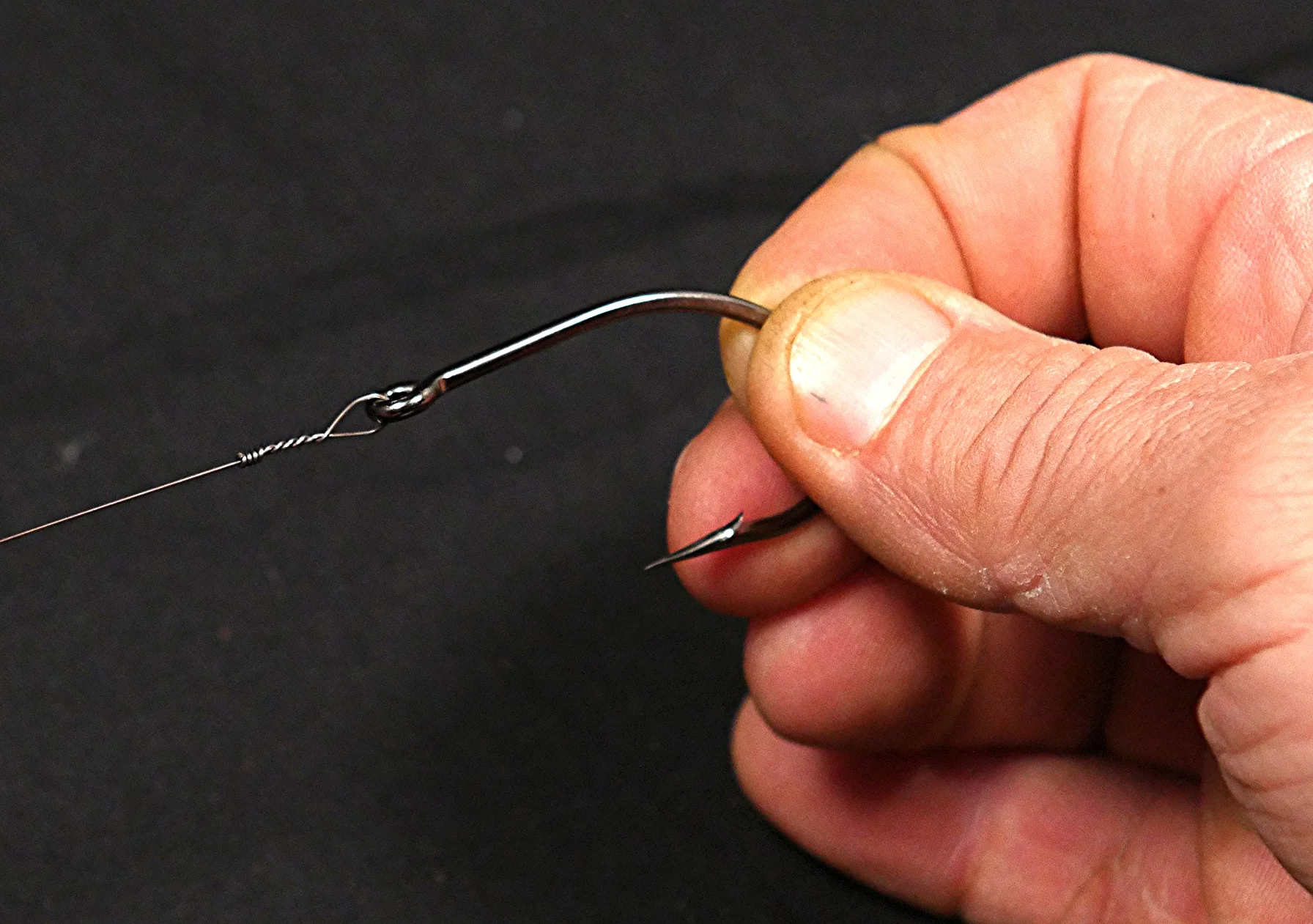The Haywire Twist is not a fancy knot, simply a tried and true fundamental knot that works very well.
Northern Pike and Musky are the two most popular toothy critters in North America in freshwater, but the oceans on both coasts of the United States are full of predator fish with big teeth. These fish like Barracuda, Mackerel, Sharks, and Wahoo are fun to catch and available to a large portion of the US anglers. In order to catch these fish, however, a leader has to be used to protect the line from these sharp teeth.
Types of wire
There are really 3 types of wire available to the fresh and saltwater fisherman; Solid Wire, Braided, Coated Wire and Titanium Wire. In this post we will tackle the first and most important type of wire for my fishing which is Solid Wire or Piano Wire.
This is the main type of wire used in saltwater although I have rarely seen it used in freshwater. In my opinion, solid wire is the very best for most of the fishing I do and it would also be best for the Northern Pike and Musky as well because of the thin diameter and strength that it offers. In my limited experience with those fish, I have seen mostly Braided wire or Titanium wire, but I feel strongly that those anglers could benefit greatly from learning how to use solid wire.
While solid wire has significant advantages over all other types of wire, some anglers shy away from this type of wire because it does have its disadvantages.
Advantages:
Thin diameter, High strength, low visibility. Simple knot called the Haywire twist is the standard way to attach it to the lure or swivel and there are many knots that are excellent for attaching to the line. Available in a wide variety of pound test and diameter for every type of fish.
Disadvantages:
Will kink or curl after some catches but can be straightened, Must learn at least 2 knots. Can cut your hand if tag end is cut incorrectly. It is not usually offered as a pre-tied rig in tackle shops.
I find this type of wire to be the very best for Shark fishing, King Mackerel, Wahoo, and big Goliath Groupers. In fact, we have to use this type of wire to be able to catch those fish because the teeth on these big predators simply go right through the other types of wire. Let me rephrase that last statement...I have lost alot of great fish on the other types of wire because the teeth have gone straight through the wire. Many great fish have been caught on titanium and braided, coated wire but I do not use it for many fish due to my personal experience with loss.
If you are going to fish in the ocean, you need to know how to rig with this type of wire.
I have included several videos that will bring you up to speed and make sure that you are tying the knots correctly.
First, let's start at the hook and go over the most commonly tied knot.
The Haywire Twist is not really a knot. It is simply a way to twist the wire so that it forms a very strong loop that will not slip. Of course, it gets its name from the farm where workers would use a similar type of twist to secure hay bales. It has been refined a bit for use in fishing but it is extremely similar. There are two very important things to remember when tying the Haywire Twist:
1. Make sure that the wires are being twisted together rather than one wire being wrapped around the other. If one wire is wrapped around the other, the knot will slip.
2. Be sure to break the tag end off rather than cutting it. Leaving a 1/8" tag can cut your hand badly. Many people have been injured this way when trying to land a fish. Watch closely in the videos to see how breaking the tag end off breaks the wire right at the knot leaving it able to be pulled through your hands without injury. Very Important!
Here are two videos of the Haywire Twist:
The Haywire can be tied to the hook and also at the top of the leader to a swivel if your fishing situation requires it. I often use a swivel when shark fishing with dead bait because it sometimes spins in the current. For most other applications I will use an Albright or Alberto Knot to attach the wire to the mono or fluorocarbon leader.
Connection to the main line
I do not like to tie braid directly to solid wire so I usually use a short fluorocarbon leader and then tie either an Albright or Alberto Knot to the wire. I may also tie the braid to a swivel and use a second Haywire twist to the swivel. This is a method I use alot for Shark Fishing.
Albright Knot
This is the most commonly used knot for attaching solid wire to monofiliment or fluorocarbon. Steve tied the Albright in the video above, but here is another video that I did with larger, more visible lines:
Another option is the Alberto Knot which I go over in the video below:
The Alberto Knot-
The Alberto is probably a superior knot to the Albright when used to attach braid to fluorocarbon but I see it as about the same as the Albright in terms of strength with fluorocarbon to wire. I use both knots now and really like this Alberto Knot.
There are other knots that you could use, but these 3 knots are by far the most common and the best. Learn these and you will be well on your way to being an expert with solid wire.
All the best,
Tom Rowland
If you enjoyed this post, please share on social media by clicking the share button below and selecting your favorite social platform





